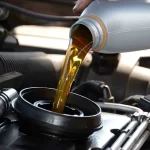
Now that we are in fall, we can wave goodbye to those long and hot summer days. The leaves will start falling, the weather will get colder, and the sun will set earlier. It’s at this particular time of year that a lot of car owners will start preparing for the winter season, believe it or not.
Early preparation for icy and snowy weather is an essential part of car maintenance. The last thing you want to do is drive a car in adverse weather and have to worry about it breaking down!
Are you unsure of the best ways to prepare your car (and yourself) for winter driving? Lucky for you that today’s blog post will focus on that specific topic! Today you will learn about the best ways of preparing for winter so that you don’t end up getting stranded in bad weather.
The first part of this guide will focus on checking your car is OK to drive in even the most challenging of winter weather conditions. Here is what you need to know:
Tires
The thing about car tires is that many car owners neglect to check them on a regular basis. When that happens, you increase the risk of having a blowout.
Go around your car and do a detailed visual inspection of each tire. Here are some key things that you need to check:
- Manufacturing date. All tires have a week, and year of manufacture stamped on the sidewall. For example, the 12th week of 2014 will be “1214.” If the tire you inspect is five or more years old, I recommend replacing it as soon as possible. The rubber on old tires hardens, and that makes it more brittle;
- Tread depth. The tread depth refers to the grooves in the middle of the tires. Those grooves have a depth of 8mm on brand new tires. In the United States, it is illegal to use tires with a tread depth of 1.6mm or less. If your tires get to 4mm, replace them now rather than at the legal limit. That’s because tires only have 50% efficiency at 4mm;
- Physical damage. If your tires have rips, tears or holes in them, replace them with brand new ones. Even if they can get repaired by your local tire shop, I still recommend you replace them with brand new tires. Once the structure of the tire gets compromised, a repair job isn’t good enough to handle extreme weather conditions;
- Size. The tires on your car should be the same size on each axle. Check your owner’s manual to determine which size tires your car needs. Don’t use different ones unless it is safe to do so.
Some car owners also keep a spare set of wheels with winter tires on them. As the temperature starts to drop, they have their wheels swapped over. They then store their “normal” wheels and tires during the cold winter months.
You might think this is somewhat overkill. But it makes perfect sense because you won’t have to buy new tires so often, and you preserve the condition of your alloy wheels.
Brakes
Safety systems like ABS and electronic stability control rely on brakes that are in perfect working order. Are your car’s rotors or brake pads are anything but perfect? If so, I recommend that you have your local auto shop fit new replacements before winter.
A quick visual check through each wheel’s spokes can help you determine what condition they are in. But it’s worth getting a shop to do a detailed assessment.
Under the hood
Many car breakdowns get caused by problems related to components under the hood:
- Battery. You can use a multimeter to check the voltage levels of your battery, especially when it is under load. Some batteries have “health” indicators on them. Green means the battery is good. Yellow means the voltage is low, or the battery is failing. And white or black means that you need to replace the battery now. As a rule, consider changing your battery when it gets to five years of age;
- Drive belts. All cars have drive belts. Cam and “fan” belts are all made of rubber and only have a limited lifespan. A1 Carriages recommends changing the ones on your car every three years or 36,000 miles, whichever comes first;
- Ignition system. You should give all spark plugs, ignition leads and ignition modules a visual inspection. Spark plugs can get changed every 20 to 40,000 miles, and ignition leads and modules should last around 100,000 miles;
- Fluids. Make sure that all your engine’s vital fluids get topped up before you go out on any long journey. If you have to keep topping up your engine’s fluids, it could be that you’ve got a leak somewhere. In that case, have an auto shop inspect your car’s motor and find the source of the leak;
- Windshield washer fluid. It is quite essential that you make sure your windshield washer fluid bottle has plenty of fluid in it before you drive anywhere. You will use a lot of this when it snows or rains, because of the crud that gets thrown up your car from vehicles in front of you.
Cleanliness
One thing that some car owners don’t bother with in winter is cleaning their cars. It is important you do so from a safety point of view. If your headlights and rear taillights get covered in dirt and crud, you will find it hard to see the road ahead when it’s dark and snowing.
And other motorists will find it hard to see that you are in front of them on the road too! You don’t have to spend hours detailing your car. Just a simple clean at home or at your local car wash will do the trick!
After you have washed your car, make sure that all the exterior bulbs on your car work as they should. Replace any broken ones as soon as possible.
Good luck with your winter driving!











